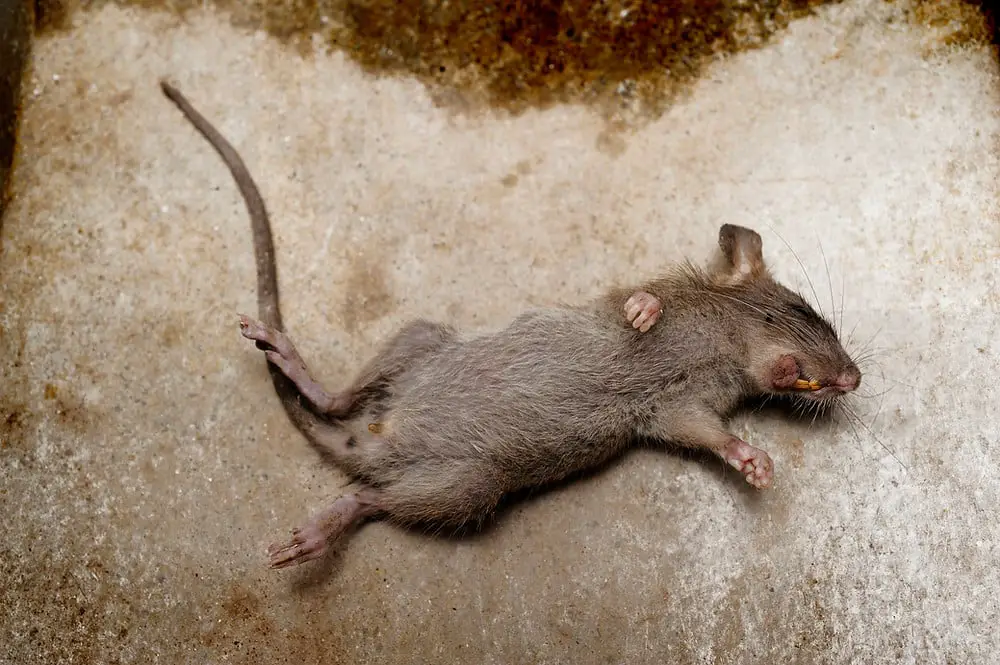Introduction
Do Rats Have Rabies: Rats are commonly associated with various health concerns, and one question that often arises is whether rats can carry and transmit rabies. Rabies is a viral disease that affects the central nervous system and can be deadly if left untreated. While many mammals, including dogs and bats, can contract and transmit rabies, rats are not typically considered primary carriers of the virus.
Rats, specifically the common brown rat (Rattus norvegicus) and the black rat (Rattus rattus), are known to carry a range of other diseases, such as leptospirosis and hantavirus, which can be transmitted to humans through contact with their urine, feces, or bites. However, rabies transmission from rats to humans is extremely rare, and documented cases are exceptionally uncommon.
In this article, we will delve into the reasons behind the rarity of rabies in rats, explore the potential risks associated with rat-borne diseases, and provide guidance on how to stay safe in environments where rats are present.

Has a rat ever had rabies?
Generally speaking, rats and mice are too small to survive very long with rabies. While they can certainly carry the virus that causes the rabies disease, wild rabid rats haven’t been found. Over 50,000 people are bitten by rats each year, but none are given rabies shots.
Rabies is a deadly viral disease that affects mammals, including humans, and is most commonly associated with animals like dogs, bats, and raccoons. However, the question arises: Can rats get rabies? In this article, we will explore the possibility of rats contracting rabies and the implications it may have.
The Susceptibility of Rats to Rabies:
Rats, specifically the common brown or Norway rat (Rattus norvegicus), are less commonly known to be carriers of rabies compared to other animals like bats or dogs. While rats are not immune to rabies, their susceptibility to the disease is relatively low. This is due in part to their distinct biology and behavior. Rabies is typically transmitted through the saliva of an infected animal, usually through bites. Rats, however, are not prone to aggressive behavior or frequent biting like some other mammals. This means that the likelihood of a rat contracting rabies from another infected animal is relatively low.
Instances of Rabid Rats:
While rare, there have been documented cases of rabid rats. These cases are exceptions rather than the norm. When a rat does contract rabies, it is often because it came into contact with another rabid animal, such as a rabid bat. Bats are known carriers of the rabies virus and can transmit it to other animals they encounter, including rats. In such cases, the rat becomes a secondary host, and it is unlikely to transmit the virus further due to its low tendency to bite other animals or humans.
Implications for Public Health:
The limited susceptibility of rats to rabies is generally good news for public health. Rats are one of the most common urban pests worldwide and are often in close proximity to humans. If rats were highly susceptible to rabies and capable of transmitting it easily, it could pose a significant public health risk.
What happens if a rat bites you?
Rat bites usually look like a small, single puncture wound or a number of small cuts. They also tend to bleed and cause painful swelling. If the bite becomes infected, you might also notice some pus
A rat bite may not be a common occurrence for most people, but when it does happen, it can raise concerns about potential health risks and the need for immediate medical attention. While rats are generally associated with disease transmission, the consequences of a rat bite can vary depending on several factors, including the health of the rat, the cleanliness of the wound, and the promptness of treatment.
It’s essential to understand that not all rat bites are created equal. Rats can carry various diseases and bacteria, and the severity of the bite’s consequences largely depends on whether the rat was infected with any pathogens at the time of the bite. Rats can carry diseases such as Leptospirosis, Hantavirus, and Rat-Bite Fever, among others. However, not all rats are carriers of these diseases, and even if they are, it doesn’t guarantee that every bite will lead to an infection.
When a rat bites you, the immediate concern is the risk of infection. Rat saliva can contain harmful bacteria, which can be introduced into the wound during the bite. If the wound is not promptly cleaned and treated, it can become infected, leading to redness, swelling, pain, and potentially more severe symptoms like fever and pus formation. It’s crucial to clean the wound with soap and water thoroughly and apply an antiseptic to reduce the risk of infection.
Can a rat give a human rabies?
Exposure to rodents and lagomorphs has never been implicated as the cause of infection for a case of rabies in humans in the United States, nor are these animals considered natural reservoirs of the disease.
Rabies is a deadly viral infection that affects mammals, including humans. It is primarily transmitted through the saliva of infected animals, usually through bites or scratches. While dogs, bats, raccoons, and skunks are commonly associated with transmitting rabies, the question of whether a rat can give a human rabies is a valid one. Let’s delve into the factors that determine the risk of contracting rabies from a rat.
Firstly, it’s important to note that rabies in rats is exceptionally rare. Rats are not known to be natural reservoirs for the rabies virus. Instead, rabies is more commonly found in mammals like bats and canids (such as dogs and foxes). This means that the probability of encountering a rabid rat is very low compared to other animals. However, it’s not impossible. If a rat were to come into contact with a rabid animal, such as a bat, and were bitten or scratched, it could theoretically become infected with the virus.
Secondly, even if a rat were to become infected with rabies, the transmission of the virus to a human would be a complex process. Rabies is typically transmitted through the saliva of an infected animal entering the bloodstream of another. While a rat bite could introduce the virus into a human’s body, several factors influence the likelihood of transmission. The virus would need to be present in the rat’s saliva, which is relatively uncommon, and the bite would have to be deep enough to breach the skin and allow the virus to enter the bloodstream. In most cases, rat bites do not penetrate deeply enough to facilitate transmission.
Does rat poop carry rabies?
The virus is most commonly spread through saliva when an infected animal bites another animal or person. Rabies is not spread by blood, urine or feces. Infected animals can only transmit rabies after the initial signs of illness begin.
Rat poop, also known as rodent feces, is generally not a direct carrier of rabies.
Rabies is a viral disease primarily associated with mammals, particularly mammals in the order Carnivora, which includes dogs, raccoons, bats, and foxes, among others. While rats and other rodents can carry various diseases, they are not reservoirs for the rabies virus. Rabies is caused by the rabies virus, which is typically transmitted through the saliva of an infected animal, often through bites.
Rabies is most commonly spread through the bite of an infected animal. The virus is present in the saliva of the infected animal, and when it bites another animal or human, it can transmit the virus. While rat feces can carry other diseases and pose health risks, they are not a direct means of transmitting rabies.
It’s essential to understand that rabies is a relatively rare disease in many parts of the world, thanks to widespread vaccination programs for pets like dogs and cats. In the United States and other developed countries, the primary carriers of rabies are wild animals such as bats, raccoons, skunks, and foxes. Domestic animals like dogs and cats can also contract rabies if not vaccinated but are less likely to pass it on to humans through their feces.
Is it safe to touch a dead rat?
The bacteria, viruses, and parasites they carry pose a severe risk to your health, as well as the health of your family and pets. Our recommended safety precautions are: Latex or rubber gloves – never touch a dead rat with your bare hands.
The safety of touching a dead rat depends on various factors, including the circumstances surrounding the rat’s death, your personal health and hygiene practices, and your intentions for handling the carcass. In general, it is not recommended to touch dead rats or any dead animals without proper precautions due to the potential health risks they pose.
One of the primary concerns when handling a dead rat is the risk of disease transmission. Rats can carry a variety of diseases, some of which can be transmitted to humans through direct contact with their carcasses, urine, feces, or saliva. One of the most notorious diseases associated with rats is leptospirosis, which can cause flu-like symptoms and, in severe cases, organ failure. Other diseases like hantavirus and rat-bite fever can also be transmitted through contact with rats or their bodily fluids.
If you find a dead rat, it’s essential to avoid direct contact and take proper precautions. Wear disposable gloves and use a shovel or a plastic bag to pick up the carcass. Double-bag the rat in plastic bags and seal them securely before disposing of it in an appropriate manner, such as in a sealed trash container. After handling the carcass, be sure to thoroughly wash your hands with soap and warm water for at least 20 seconds, as well as disinfect any tools or surfaces that came into contact with the rat.
Do dead rats have rabies?
Some animals almost never get rabies. These include rabbits and small rodents such as squirrels, chipmunks, rats, mice, guinea pigs, gerbils and hamsters.
Rabies is a viral disease that affects mammals, including humans, and is primarily transmitted through the saliva of an infected animal via bites or scratches. It is a potentially deadly disease that affects the central nervous system. One common concern among individuals is whether dead rats can carry and transmit rabies. In this article, we will explore this topic in detail, breaking it down into three key sub-paragraphs.
The Lifespan of the Rabies Virus Outside the Host:
Rabies is a fragile virus that does not survive for an extended period outside a host’s body. Once the virus is exposed to environmental factors such as sunlight, air, or drying, it rapidly becomes non-viable. Consequently, a dead rat, even if it was infected with rabies at the time of death, is highly unlikely to transmit the disease. The virus’s survival outside the body depends on various factors, including temperature and humidity. In general, the rabies virus can survive for a limited time on surfaces or in the environment, but it typically becomes inactive within a matter of hours.
However, it’s crucial to note that the virus can persist for a more extended period if it remains protected within the tissues of a dead animal. For example, if a dead rat is stored in a cool, dark, and moist environment, the virus might remain viable for a slightly longer time within the carcass. Nevertheless, the risk of contracting rabies from a dead rat, even under these circumstances, is exceedingly low.
Transmission Risk from Dead Rats:
While the rabies virus is fragile outside the host, there is still a minimal risk of transmission if a person comes into contact with the saliva, nervous tissue, or brain of a rabid animal, dead or alive. This risk primarily exists through open wounds or mucous membranes coming into contact with the virus-containing tissues. In the case of a dead rat, handling it with bare hands, especially if it has visible signs of decomposition or decay, could theoretically pose a risk, albeit extremely low.
To mitigate this minimal risk, individuals should always exercise caution when handling dead animals, particularly if they are uncertain about the cause of death or suspect rabies. Using gloves, avoiding direct contact with the animal’s mouth, and washing hands thoroughly with soap and water after handling the carcass are sensible precautions.
Reporting and Testing Dead Rats:
If you encounter a dead rat in an area where rabies is a known concern, it’s advisable to report it to local animal control or public health authorities. They can assess the situation, determine if any additional precautions are necessary, and arrange for testing if deemed appropriate. Rabies testing typically involves examining the brain tissue of the animal to detect the presence of the virus.
Do you need rabies shot after rat bite?
Bites of squirrels, hamsters, guinea pigs, gerbils, chipmunks, rats, mice, other small rodents, rabbits, and hares almost never require rabies postexposure prophylaxis. The quarantine period is a precaution against the remote possibility that an animal may appear healthy, but actually be sick with rabies.
Rabies is a viral disease that primarily affects mammals, including humans. It is most commonly transmitted through the saliva of an infected animal, typically through a bite. While rabies is often associated with animals like dogs, bats, and raccoons, it is important to address the question of whether a rabies shot is necessary after a rat bite.
In most cases, a simple rat bite does not pose a significant risk of rabies transmission to humans. Rats are not natural reservoirs for the rabies virus, and they rarely carry the disease. However, there are exceptions, such as the presence of rabid animals in the vicinity or the possibility of indirect transmission through a rat bite wound contaminated with infected saliva.
The necessity of a rabies shot after a rat bite depends on several factors, including the circumstances of the bite, the region or location where it occurred, and the availability of immediate medical attention. If the bite is superficial, clean, and not contaminated with saliva or other bodily fluids, the risk of rabies transmission is low. In such cases, thorough wound cleaning and a tetanus shot may be sufficient. However, if the bite is deep, contaminated, or there is any doubt about the rat’s health or potential exposure to rabies, it is essential to seek immediate medical attention.
Can I get rabies from a rat bite?
Small rodents (like squirrels, hamsters, guinea pigs, gerbils, chipmunks, rats, and mice) and lagomorphs (including rabbits and hares) are almost never found to be infected with rabies and have not been known to transmit rabies to humans.
Rabies is a viral disease that affects mammals, including humans. While it is most commonly associated with dogs and wild animals like raccoons and bats, the possibility of contracting rabies from a rat bite is exceedingly rare. In fact, rats are not considered a primary host for the rabies virus, and cases of rat-to-human rabies transmission are extremely uncommon.
Rabies is typically transmitted through the saliva of an infected animal, usually through a bite or scratch. The virus travels along nerve pathways to the brain and central nervous system, eventually leading to severe neurological symptoms. In the case of rats, they are not natural reservoirs for the rabies virus, meaning they are unlikely to carry the virus in their saliva. Instead, rabies is more commonly associated with certain wild animals and, in some regions, domesticated animals like dogs and cats.
It’s important to note that while the risk of rabies transmission from a rat bite is low, it is not impossible. Rats can theoretically become infected with the rabies virus if they are bitten by a rabid animal, such as a bat. However, the chances of encountering a rabid rat are exceedingly slim, as rats are not aggressive animals and are not prone to attacking humans. Moreover, urban rat populations are less likely to come into contact with rabid wildlife compared to animals living in more rural or wilderness environments.

Conclusion
The question of whether rats can carry and transmit rabies is an important one, but it is essential to clarify that rats are not a significant reservoir or vector for the rabies virus. While rabies is a deadly viral disease that affects mammals, including humans, and is primarily associated with animals like bats, raccoons, skunks, and certain wild carnivores, it is relatively rare in rats.
Rats can contract rabies if they are bitten by a rabid animal, but such cases are exceedingly uncommon. The vast majority of rats that come into contact with the virus do not become infected or transmit it to humans. Rabies transmission is more commonly associated with animals that have a higher likelihood of encountering rabid wildlife or other rabies carriers.
However, it is still crucial to exercise caution when dealing with any wild or potentially rabid animal, including rats. Avoid contact with them, especially if they exhibit unusual or aggressive behavior, and seek medical attention if you are bitten or scratched by a rat. In regions where rabies is endemic, it is advisable to take preventive measures such as rabies vaccinations for pets and maintaining a safe distance from wildlife that may carry the virus.





No Comments